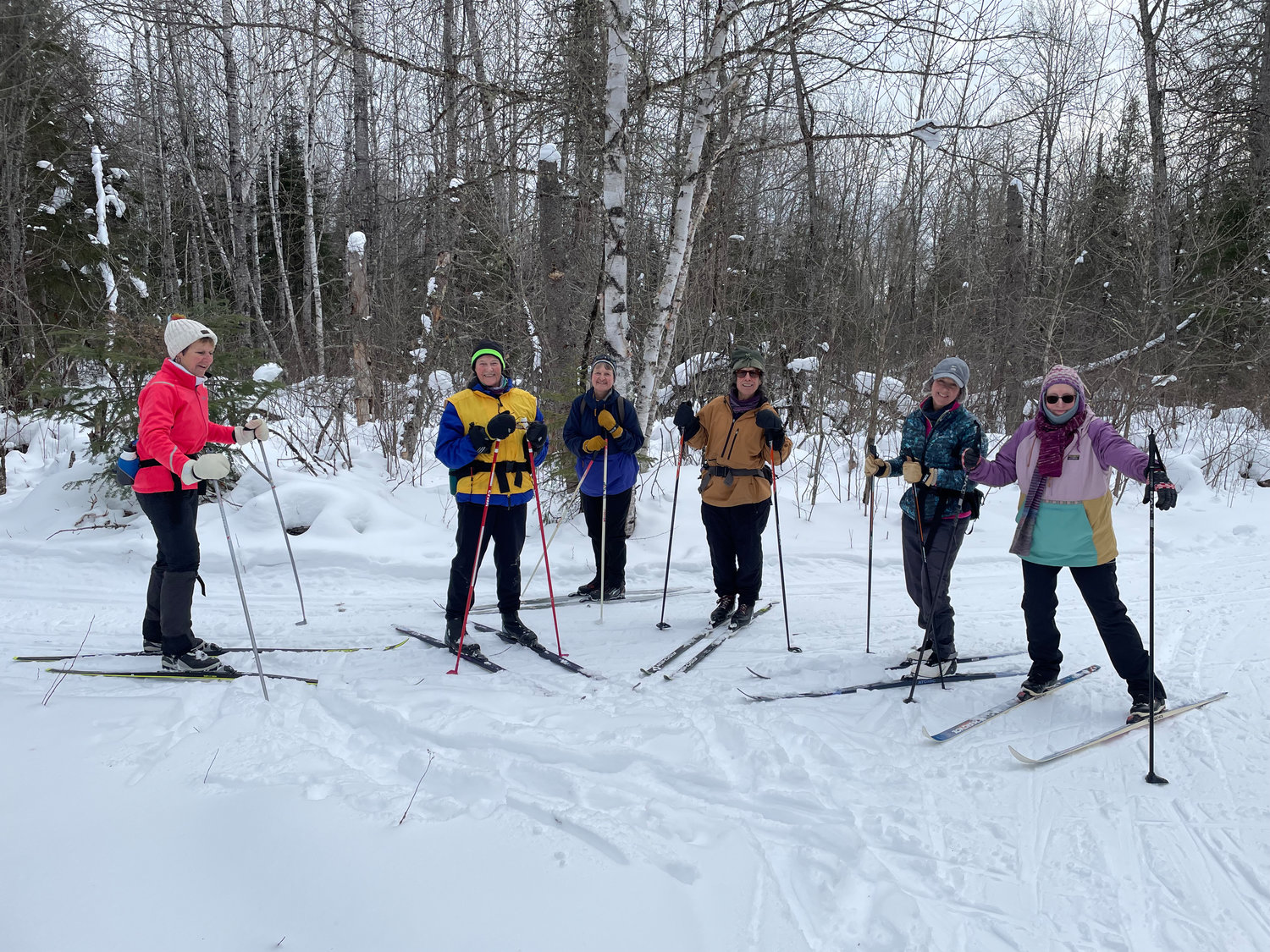Support the Timberjay by making a donation.
Tower cross-country ski trails in great condition
Fundraiser underway to fix the ski trail lighting system
TOWER- The Howard Wagoner Ski Trails are looking better than ever, according to Wagoner Trails Club President Mary Shedd.
The club was able to purchase a new snowmobile to pull the trail groomer last year and this year, Terry Wagoner, who is in charge of grooming, fashioned a snow packing drag out of an old boat trailer, to flatten the snow before the groomer sets down the double sets of tracks for classical cross-country skiing. This has created better ski trail conditions, said Shedd.
“It’s not surprising to see two or three other cars in the main parking lot when you pull in,” said Shedd. “We are seeing a steady increase in use. The word is really getting out.”
But skiers don’t need to worry about crowds on the trails. With over 11 kilometers of trails looping through pine woods and lowlands, skiers usually feel like they have the trails all to themselves.
The cross-country ski trails have been in place for over 40 years, winding through forested lands owned by the city. The trail system was developed by the late Howard Wagoner, an area forester and avid skier.
While the north trailhead starts on Highway 135, adjacent to the new Lamppa building (and shares a trailhead with the Prospectors ATV Trail), the main areas of trails are on both the east and west sides of Highway 135, about 1.5 miles south of Tower where there is a parking lot that can easily fit six to eight vehicles.
Over the last few years, club members have done a lot of trail maintenance and installed detailed maps at all trail intersections. In total, there are about 11.5 km of looping trails, which are both perfect for beginner and intermediate skiers. Steeper hills are all well marked, as are the trails most suitable for beginning skiers.
The club is currently raising money to replace the lighting system that provides a short, lighted beginners loop for night skiing. The lights are 30 years old, and many are not functioning. The club has raised about 75 percent of the money needed to upgrade the lights and has set up a GoFundMe page to try to raise the remaining $2,500. You can visit GoFundMe.com and search for Tower Ski Trails to find the fundraiser. Donations can also be mailed to Wagoner Trails Club, Light the Trails Fund, 1047 Manitou Park Road, Tower, MN 55790. The club still needs to raise a little over $1,000. They hope to get the new lights installed over the summer.
The trails are groomed regularly, depending on snow conditions. You can find up-to-date trail reports on the group’s Facebook page (search for City of Tower Ski Trails), or at www.skinnyski.com.
The trail is groomed with funding provided by the DNR, and skiers are required to have a Minnesota Ski Pass, available at local DNR license vendors or online. Membership in the Wagoner Trails Club is $5 a year, or $10 for a family, and helps fund maintenance of the ski trail system. Checks made to “City of Tower Ski Trails” can be mailed to Ski Trail Committee Treasurer, 1047 Manitou Park Road, Tower, MN 55790.
Future plans of the club are to develop some skate-skiing trails. The club is currently working with St. Louis County on possible routes adjacent to the existing classic ski trails. Club members would also like to make the trails more accessible for summer and fall hiking. The public is asked not to hike or snowshoe (or bring dogs) on the groomed trails during the winter, since it ruins the tracks for skiing. But snowshoers and hikers are welcome to hike on the edges of the trails. The trails are open to year-round non-motorized use. Some of the trails (all marked) are now shared routes with the motorized Prospectors Trail, but there are still miles of good hiking trails available when the snow is gone, though some of the ski routes go through wetlands which are not passable except in winter. Club members are exploring options for creating some new summertime routes to bypass the wetland areas.






